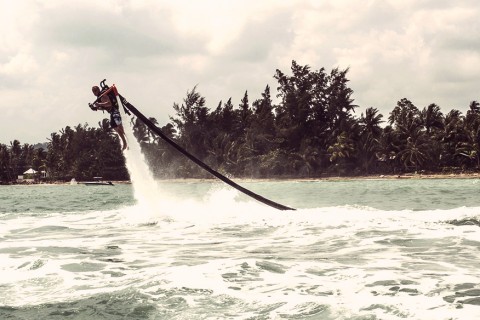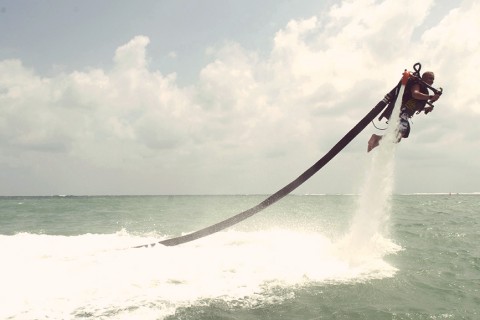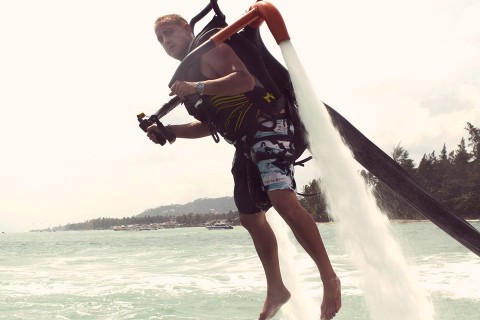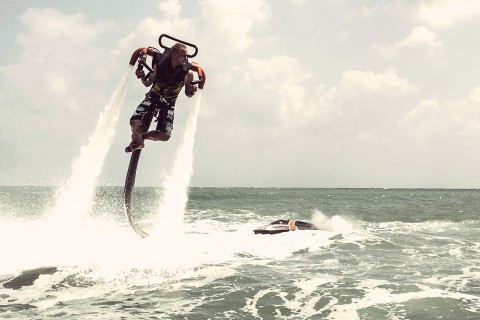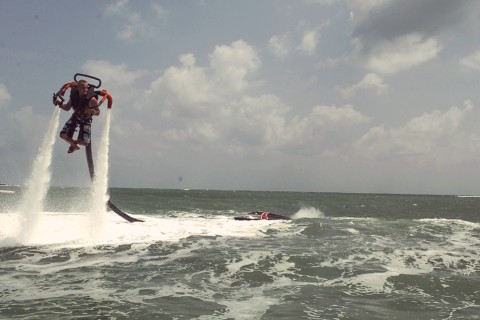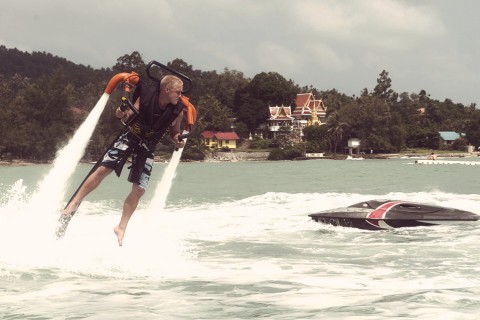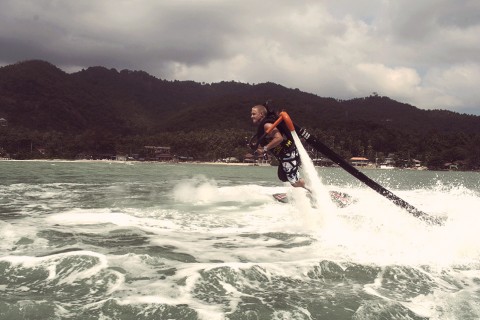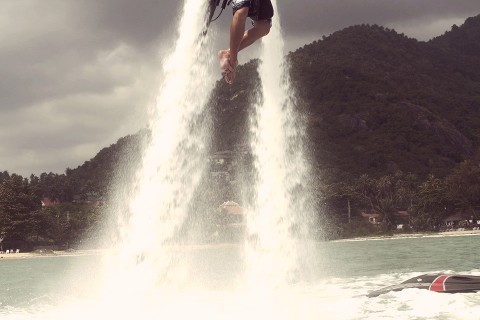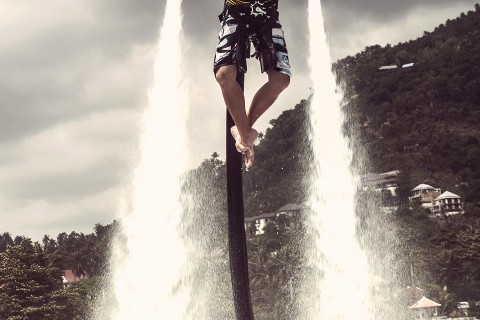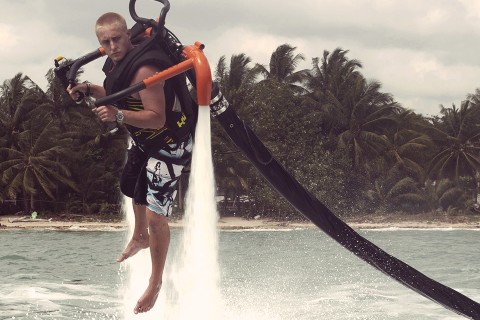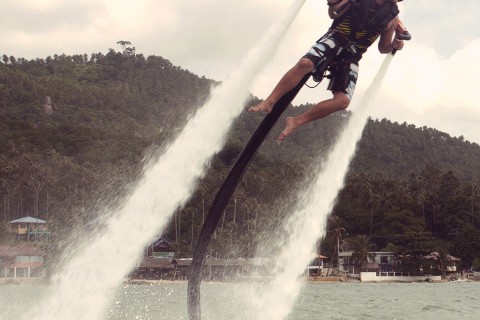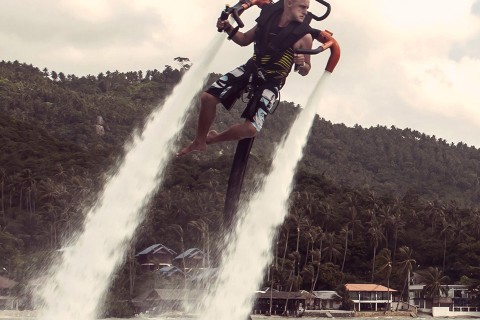

Testing at the end of February in our Ko Samui testing center. Final series frames and floatation, Arms and nozzles are production series, high temp powdercoated over hard anodized. The angles are good now, arms relaxed in the correct position. New harness system works like a charm.
We decided to pursue a more specific solution to the modification or ReCap of the jet ski system, something with a more distinctive personality. The nature of a riderless powerplant evoked drones and drone aircraft. Galactica Cylon or Predator type with a forward radar bulge that actually fit in well with the water channeling requirements and air intake protection in rough water. Shape of the front more rounded in case of contact with the beginner pilot while waiting in the water.
After spending considerable energy in the planning of a full production setup for powerplants We realized that the 100K power unit was not going to fly. In addition to the huge impracticalities of shipping such large untis around the world, the complexities of the units were simply duplicating all of the efforts that had gone into the original donor jet skis. Better to use Bombardier or Yamaha’s hundreds of millions of R&D and piggyback off it. Thus was born the ReCap project. Recapping involves taking the top off a high output jet ski and modifying the electronics and converting the hull into a strictly high powered, towable, water pump. With the ability to build it locally and service it world-wide. This would be the thing that could really grow the sport.

The alloy frame was welded and anodized in September. the first floatation system was fabricated and attached directly to the frame as per the working plan. Felt like too much forward visual mass.
Working out the system for keeping the pilots face out of the water when waiting or falling in, while allowing arm movement and control when in the air.
When we first saw Ray Li’s Jetlev on YouTube in 2009, it hit like a lightning bolt. We wanted to try this so bad. Finally we could fly without the constant presence of crashing into hard ground, without rocket fuel, without the noise. But the cost was 135,000 dollars, the cost of a small plane. And it looked like it was far away from coming to the market. We had to try, there it was, working right in front of us, shaky but functioning. We had to try to build one. We started sketching and researching all the history of rocket belts, patents, theories, old movies. Slowly we built up a plan for what our “newer, better” jetpack had to be. Here is where it all started in 2009. The early concept sketches.

From the beginning we wanted to have the floatation in the front for safety. Motorcycle frames and bike frames were strong enough for racing, they are strong enough for holding a pilot in his seat and mounting the power ducts. The double swivel was to isolate the visible effects of the hose pulling on the arms.

Early on we knew that in the future electronics were going to play a big part in stabilization and tricks. This plans lays out the differentiation of flow through the symmetric water power channels. We visualized a set of incline sensors that would regulate the water flow to balance the pilot.

Diagram of the basics of the structure, at this point we knew from watching the first videos, how important it was to isolate the jerkiness of the arms from the main power tube to prevent oversteer.

Powerplant concept, a pivoting rear hull section that would lock the water channels into place directing the thrust of the engine into the main hose and allowing for a hull shape that would allow the water craft (jetski) to be pulled backwards. We were not sure what the water flow would be like into the intake, but interesting concept.

This concept method involved the floatation attached to the backplane, and the entire backplane being able to mount or quickly disconnect from the jetpack frame.

Rollercoaster inspired, combination floatation in the front and method of locking in the rider while allowing freedom of arm movement. Requires all of the tension to be maintained in the pivot joint, which in turn requires more material and weight. Concept put on the shelf.

More methods of frame structure and arm structure, noted all the sizes of standard bike alloy tubing. The concept of seat height adjustment into the two main frame bars explored here.

We started to gravitate toward bike hardware and tubing, titanium being possible due to the availability in China, near Beijing mostly, advanced concepts at this stage included adjustable nozzle friction, nozzle brakes, ergonomic grips and palm rests for under mounted arms.
- 1
- 2
